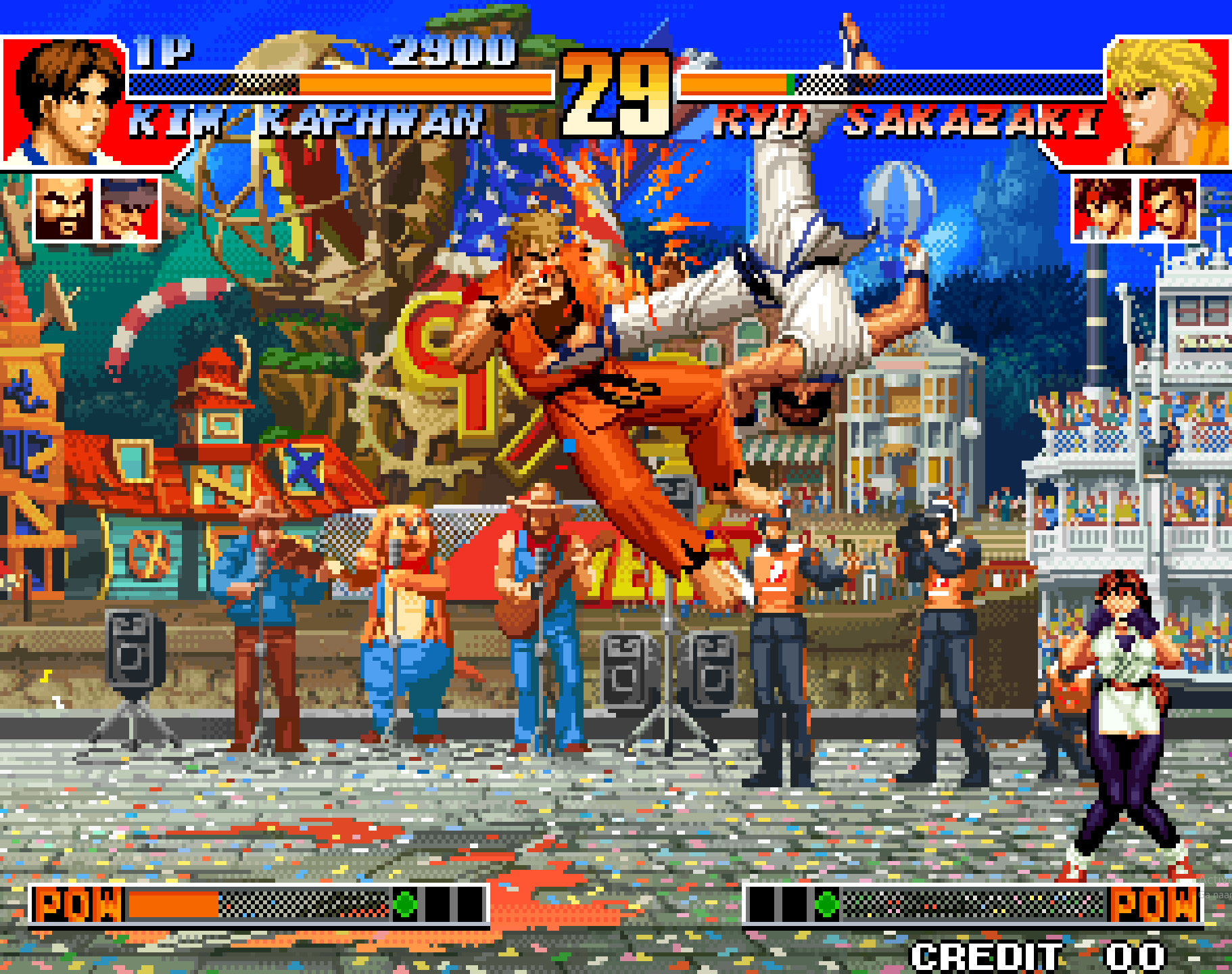Introduction
Released in 1997 by SNK, The King of Fighters '97 is the fourth entry in the KOF series and the dramatic conclusion to the Orochi Saga. Featuring an expanded roster, new fighting modes, and one of the most iconic boss fights in arcade history, KOF '97 balanced tournament-level gameplay with cinematic storytelling. It became a fan favorite for its character depth, music, and emotional stakes, cementing SNK’s place in fighting game history.

Development and History
- Developer: SNK
- Publisher: SNK
- Release Date: 1997
Built on the Neo Geo MVS hardware, KOF '97 was designed to wrap up the four-year Orochi narrative while delivering fan-requested roster changes and new features. It introduced the innovative Advanced and Extra battle systems, which gave players strategic flexibility and expanded the game’s competitive meta. The game’s story and roster served as a culmination of SNK’s most ambitious fighting universe to date.

Gameplay Video
Gameplay and Mechanics
Core Gameplay
- Advanced Mode: Based on KOF '96 mechanics—features rolling, run dashing, and manual super gauge charging.
- Extra Mode: Similar to KOF '94/'95—focuses on timed charge meters, dodge mechanics, and a more traditional pace.
- Super Desperation Moves: New, visually enhanced finishers available when at low health with a full power gauge.
- Team System: 3-on-3 team battles remain standard, with hidden teams unlocking special endings.
New and Returning Characters
- New Debuts: Shingo Yabuki (Kyo’s fanboy student), Chizuru Kagura (playable for the first time), and Orochi versions of Chris, Shermie, and Yashiro.
- Expanded Roster: 35+ fighters including Iori, Kyo, Leona, Terry, Ryo, Athena, and more.
- Orochi Team: The New Face Team transforms into Orochi’s minions in story mode.
- Final Boss – Orochi: The god-like antagonist is the final fight, boasting devastating attacks and lore significance.
Challenges
- Boss Difficulty: Orochi is one of the toughest SNK bosses—fast, powerful, and unpredictable.
- Mode Mastery: Understanding both Advanced and Extra modes is key to mastering different character matchups.
- Hidden Conditions: Certain story paths and endings only unlock with specific teams or performance.

Cultural Impact and Legacy
- Orochi Saga Finale: Provided emotional closure to one of fighting games' most complex story arcs.
- Global Popularity: Particularly beloved in Latin America, China, and Southeast Asia.
- Soundtrack Innovation: Featured unique background music cues based on character matchups or conditions.
- Home Ports and Legacy: Released on Neo Geo, PlayStation, Sega Saturn, and included in later compilations.

Fun Facts
- No Stage Music Option: Players can enable 'Character Themes' instead of stage BGM for more immersive story play.
- Iori and Leona’s Rage: When paired together, they can enter Orochi mode and go berserk in cutscenes.
- Hidden Bosses: Orochi Iori and Orochi Leona are unlockable with secret inputs.
- Multiple Endings: Depending on team selection, players can unlock unique cinematic conclusions.

Conclusion
The King of Fighters '97 is a landmark entry in the franchise—mechanically flexible, narratively rich, and dramatically intense. It delivered the payoff for years of buildup with a sprawling cast, legendary boss fights, and bold storytelling. Whether you’re a series veteran or new to KOF, this installment represents SNK at the peak of its 2D arcade mastery.
Related Pages
- The King of Fighters Series Overview: Follow the evolution of SNK’s flagship franchise.
- The King of Fighters '96 Arcade Game: The prelude to Orochi’s arrival and debut of key mechanics.
- Art of Fighting Arcade Game: Home of characters like Ryo and Robert who helped shape the KOF roster.

